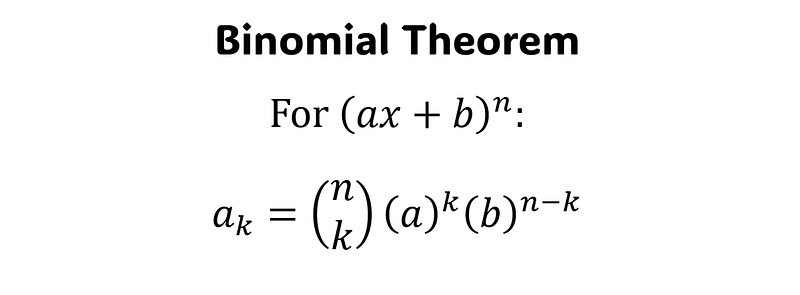A Fascinating Algebra Challenge from the 2023 Shanghai Gao Kao
Written on
Chapter 1: Introduction to the Challenge
It's widely recognized that high school mathematics in China presents significant challenges. Among the various questions in the 2023 Shanghai Gao Kao (college entrance examination), one particular algebra problem stands out. Below is the original Chinese version of the problem.

The initial three lines of the problem predominantly consist of mathematical notation, connected by a few prepositions. However, the last line requires translation, and here is the corresponding English version.

In essence, the task involves expanding this polynomial and identifying the first negative coefficient. This question leverages the binomial theorem, which facilitates expanding an expression raised to a positive integer power and allows for individual coefficient identification.

If you are familiar with the binomial theorem, you might want to tackle the problem yourself. If not, here’s a link to a detailed article on Brilliant.org that clarifies the concept, alongside one of my earlier articles discussing various intriguing applications of the binomial coefficient.
Why the Binomial Coefficient is Central to Algebra, Probability, Combinatorics and Number Theory
An intuitive explanation accompanied by three problems for you to solve.
Now, returning to the problem at hand, we need to find the k-th coefficient. We can apply the binomial theorem to each term sequentially, as illustrated below.

This simplifies nicely since (1)^(100 - k) equals 1 for any k. The term (-1)^(k) alternates between +1 and -1, being positive for even values and negative for odd. To achieve a negative coefficient, k must be odd. The "100 choose k" component can be treated as a common factor, rendering its specific value irrelevant for determining the sign of the expression.
We then arrive at:

Ultimately, we need the second term in the brackets to surpass the first, which implies that k must be less than (100 - k), leading us to a minimum k of 1. I extend my gratitude to Mehedi Nowshad, Hamid Saadi, and Joshua Haim Mamou for highlighting an error in my earlier solution!
While k = 1 is a viable solution, it doesn’t feel entirely satisfying as an answer to this exam question; students might stumble upon it by testing k = 0 and then k = 1 without fully utilizing the binomial theorem. Reviewing the original exam paper (source), it turns out the question sought the maximum k, which is k = 49.
Chapter 2: Exploring the Difficulty of High School Math in China
To further examine the rigor of high school mathematics in China, consider tackling these three multiple-choice questions from the 2021 Shanghai Gao Kao.

A Noteworthy Algebra Problem from the 2023 China Math Olympiad
The Chinese IMO team devours sequences like this for breakfast!